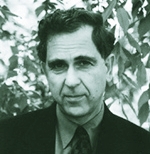
I follow the historical convention of dividing liberalism into two broad phases of development: classical liberalism, dating from the late seventeenth and eighteenth centuries, and modern democratic liberalism, beginning in the late nineteenth and early twentieth centuries. In discussing the classical phase, I emphasize the priority of classical political liberalism--constitutional liberalism--as it was elaborated in the work, for example, of Locke, Montesquieu, and the American founders. Classical economic liberalism--the liberalism of laissez-faire--was largely a nineteenth-century development. Modern liberalism rejected laissez-faire but built on the political foundations of constitutional liberalism.
From its beginnings, rather than simply being antistatist, constitutional liberalism offered a strategy for creating legitimate and effective governmental power. Indeed, the two classical liberal revolutions--1688 in England and 1776 in America--led to the rise of what became successively the two most powerful states in the world. But how did constitutionally limited states ever become more powerful than states with unlimited powers? A key part of the answer lies in the concept of an enabling constraint. As I put it in the Introduction:
By binding those in power, making their behavior more predictable and reliable,and thereby increasing the trust and confidence of citizens, creditors, and investors, constitutionalism amplifies the long-term power and wealth of a state. Constitutional liberalism imposes a further discipline by dividing power within the state and between state and society and requiring public disclosure and discussion of state decisions—all of these serving as limits on the ability of officials to pursue their own private interests and enabling the citizens to control their government. Liberalism wagers that a state so constructed can be strong yet constrained—indeed, strong because constrained. This is the classical theory of freedom’s power.
Chapter 1 adds the following:
[Constitutional] constraints protect citizens from tyranny, but that is not all they do. They also serve to protect the state itself from capricious, impulsive, or overreaching decisions. A central insight of liberalism is that power arbitrarily exercised is destructive not only of individual liberty but also of the rule of law. Limiting arbitrary power encourages confidence that the law will be fair and thereby increases the state’s ability to secure cooperation without the imposition of force. Limiting the scope of state power increases the likelihood of its effective use as well as the ability of society to generate wealth, knowledge, and other resources that a state may draw upon in an hour of need. That, at least, has been the theory of power—of freedom’s power—implicit in constitutional liberalism.
The enabling constraints of a liberal constitution work in a variety of ways. Guarantees of rights, including property rights, enable individuals to plan their lives and make long-term investments. Guarantees that the government itself will abide by its laws make it more likely to repay its debts and enable it to borrow at lower interest rates (a source of advantage to both Britain and the United States at key points in their history). Freedom of public discussion generates new information that makes it more likely that a government will correct its mistakes. The transparency of representative government makes liberal states more reliable partners for other countries and better able to assemble and sustain international alliances.
In other words, it is a mistake to believe that freedom comes only at the expense of power; constitutional liberalism is a method of using freedom to build a society and state capable of exerting immense power. I am not suggesting that liberalism is the only method of power creation or that it will always triumph over the illiberal alternatives. But for the past several centuries, it has been a surprisingly effective strategy for both the creation and the control of power.
The classical liberalism of the late seventeenth and eighteenth centuries, however, had major limitations. It was not democratic: the great majority of people were excluded from political rights. Although it called for limits on arbitrary power, including equality before the law, classical liberalism left most people without an equal chance in life, and it had no effective means for dealing with the economic dislocations and periodic panics and depressions in an industrializing capitalist economy. These problems threatened the stability and survival of liberal states, Only by overcoming these problems was liberalism able to become the dominant strategy for building successful modern states.
Paul Starr
Next: the modern liberal theory of freedom’s power



1 Comments:
The theory of divided government seems to be more of a temporary stopgap, however. As a government grows, internal stresses unify the various factions in a common goal of acquiring more and more power. With this growth, the constitutional limitations are fictionalized to the extent that they become meaningless, much like the way the U.S. supreme court treats the bill of rights.
Many classical liberals today have moved to more strict theoretical constraints proposed by such as Murray Rothbard who take a more hard core anarchocapitalist stance.
Best to you.
Just a thought.
Just Ken
kgregglv@cox.net
http://classicalliberalism.blogspot.com
Post a Comment
Links to this post:
Create a Link
<< Home